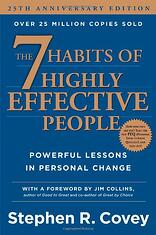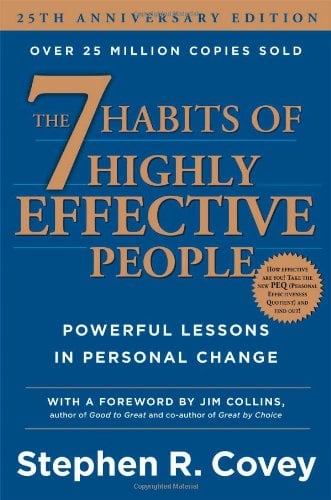Stephen Covey says "Begin With the End in Mind." Covey, author of 7 Habit of Highly Effective People, is the  authority on priorities. You need to have a clear understanding of the results that you want your team to achieve. Their "End in mind". Then you can make sure that your people in the right seats can run and execute towards the right results! I suggest using Verne Harnish's people tool to lay out each person is in the right seat focused on the right results. The first column is the role of the person, edit this to make it work for you. The second column is for each person in their roles. Then, jump to column four and think of it as the results section. Then return to column three for the leading indicator that tells you if they are on track. You want to know if the person is on track so that you can help and coach the right course corrections to help the person achieve the right results.
authority on priorities. You need to have a clear understanding of the results that you want your team to achieve. Their "End in mind". Then you can make sure that your people in the right seats can run and execute towards the right results! I suggest using Verne Harnish's people tool to lay out each person is in the right seat focused on the right results. The first column is the role of the person, edit this to make it work for you. The second column is for each person in their roles. Then, jump to column four and think of it as the results section. Then return to column three for the leading indicator that tells you if they are on track. You want to know if the person is on track so that you can help and coach the right course corrections to help the person achieve the right results.
This tool is like a present for the employees - it gives them a road map to their success. I mean imagine if everyone knew what were the 2-3 things they were hired to deliver (Column 4) and how to check themselves if they are on track (Column 3)? That would be a gift to employees who are engaged and who want to succeed. The best way to start is to make sure your people know what the result you are looking for is and how do they plan to get there. You may be unpleasantly surprised to see that not everyone can answer these questions. So use this tool to help them. Do it together with them.
Now that they understand what their priorities are - the next step is to keep everyone on track. I highly suggest using a daily huddle. In the old days at my first company, Metasys, we had large software projects to deliver to Fortune 500 clients. I used this when these projects got out of hand and we had difficulty driving everyone on the right things everyday. I needed to get every project team aligned so I could be sure everyone was on the same page. At times, people are overstepping each other on tasks and causing work to be redone. Make sure your daily huddle is short, sharp and keep everyone interested. Daily huddles are a must with your company leaders, but can also be used with a small group that may be working on a project. If you have a large projects that is spinning out of control and need focus - the daily huddle can bring things to the surface and help you regain control immediately. Use this time for each person to report on:
- Victories from the day before (everyone does their victory first)
- Share your #1 priority for the day (same pattern, each person shares)
- Share any KPIs that will help the project move faster (not necessary, only when it will help)
- Is anyone stuck? (optional for those who need help)
Don't try and solve complex issues or problems in your daily huddles. Think Synchronize. Don't think problem solve. If a "stuck" needs some extra time or effort from one or two people from the huddle - have them meet off line. Feel free to invite anyone to solve the stuck that may want to assist or may learn from the extra time after huddle. Don't allow your huddle to run long. Your team may have other meetings or work scheduled right after this huddle. If you do not honor their time and run long, you might lose their attention - even though they may be there physically. Keep it short. Keep people interested.
Photo Credit: iStock by Getty Images



 LinkedIn
LinkedIn
 Facebook
Facebook